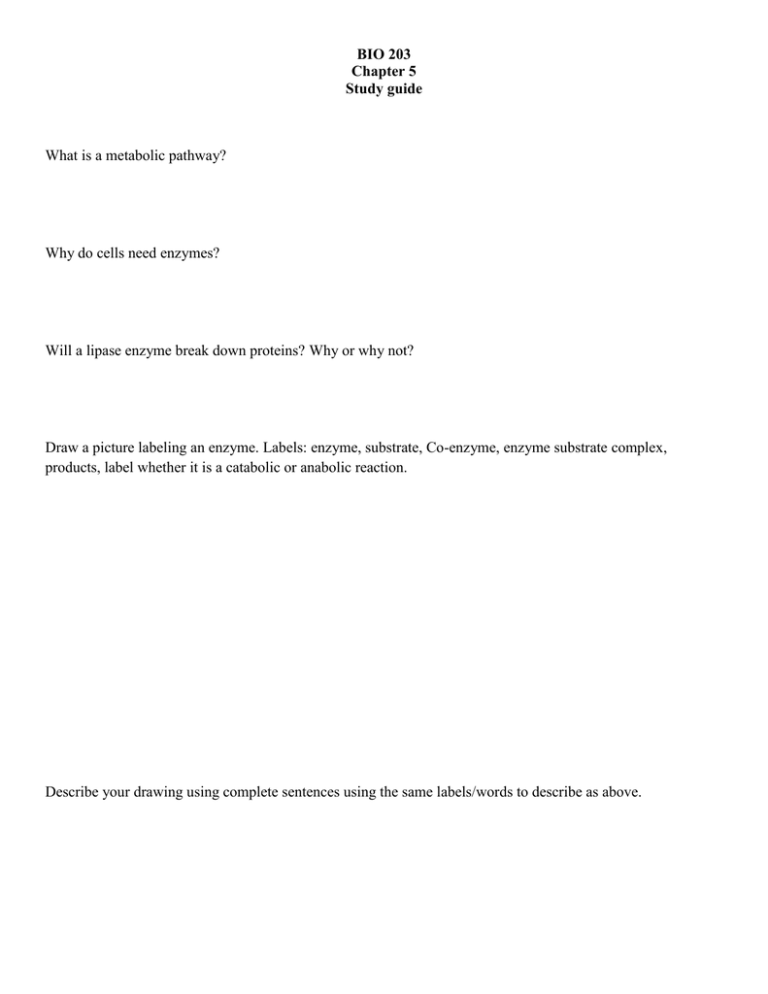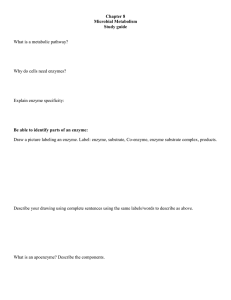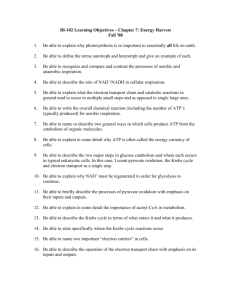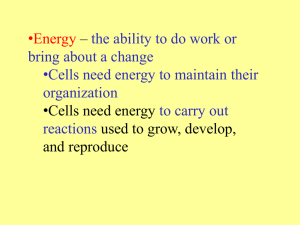BIO 203 Chapter 5 Study guide What is a metabolic pathway? Why
advertisement

BIO 203 Chapter 5 Study guide What is a metabolic pathway? Why do cells need enzymes? Will a lipase enzyme break down proteins? Why or why not? Draw a picture labeling an enzyme. Labels: enzyme, substrate, Co-enzyme, enzyme substrate complex, products, label whether it is a catabolic or anabolic reaction. Describe your drawing using complete sentences using the same labels/words to describe as above. What is an apoenzyme? Describe the components. Why are coenzymes important? What are the different factors that affect enzyme activity? What is happening when an enzyme denatures? Describe allosteric regulation. Describe feedback inhibition. Compare and contrast competitive and non-competitive inhibitors. How are catabolic and anabolic reactions different? Describe the role of ATP in a cell. What is the difference between oxidative and substrate level phosphorylation? Describe Oxidation and Reduction: What is the role of electron carriers in a cell? Carbohydrate catabolism List the 4 key metabolic pathways that are used by bacteria to break down glucose. Summarize what is happening to glucose when catabolized. Glycolysis Answer the following question set for glycolysis: What is happening to glucose during glycolysis? How many ATP are used? How many ATP are generated? What is the net gain of ATP? How much and in what form of reducing power is generated? What are the end products of glycolysis? Cellular Respiration What are the 2 types of respiration? How are they different? Transition reaction What is the input product into the transition reaction? What are the end products for 1 molecule of glucose? How much reducing power and in what form is generated if any? Krebs cycle What are the input products for the krebs cycle? What are the end products? How much ATP is produced? How much reducing power and in what form is generated? Electron transport system What is the source of electrons in the electron transport system which enables a hydrogen ion gradient to form? Describe the electron transport system and its role in generating the proton motive force. What is the proton motive force? How is ATP synthesized from the electron transport chain? How much ATP is generated from 1 molecule of glucose during aerobic cellular respiration? Summarize the entire process from glycolysis to the electron transport system. Describe aerobic respiration. What is the difference between aerobic respiration, anaerobic respiration and fermentation? List some important by-products from fermentation. Is anaerobic respiration and fermentation the same process? Describe the catalase test. Describe the oxidase test.




